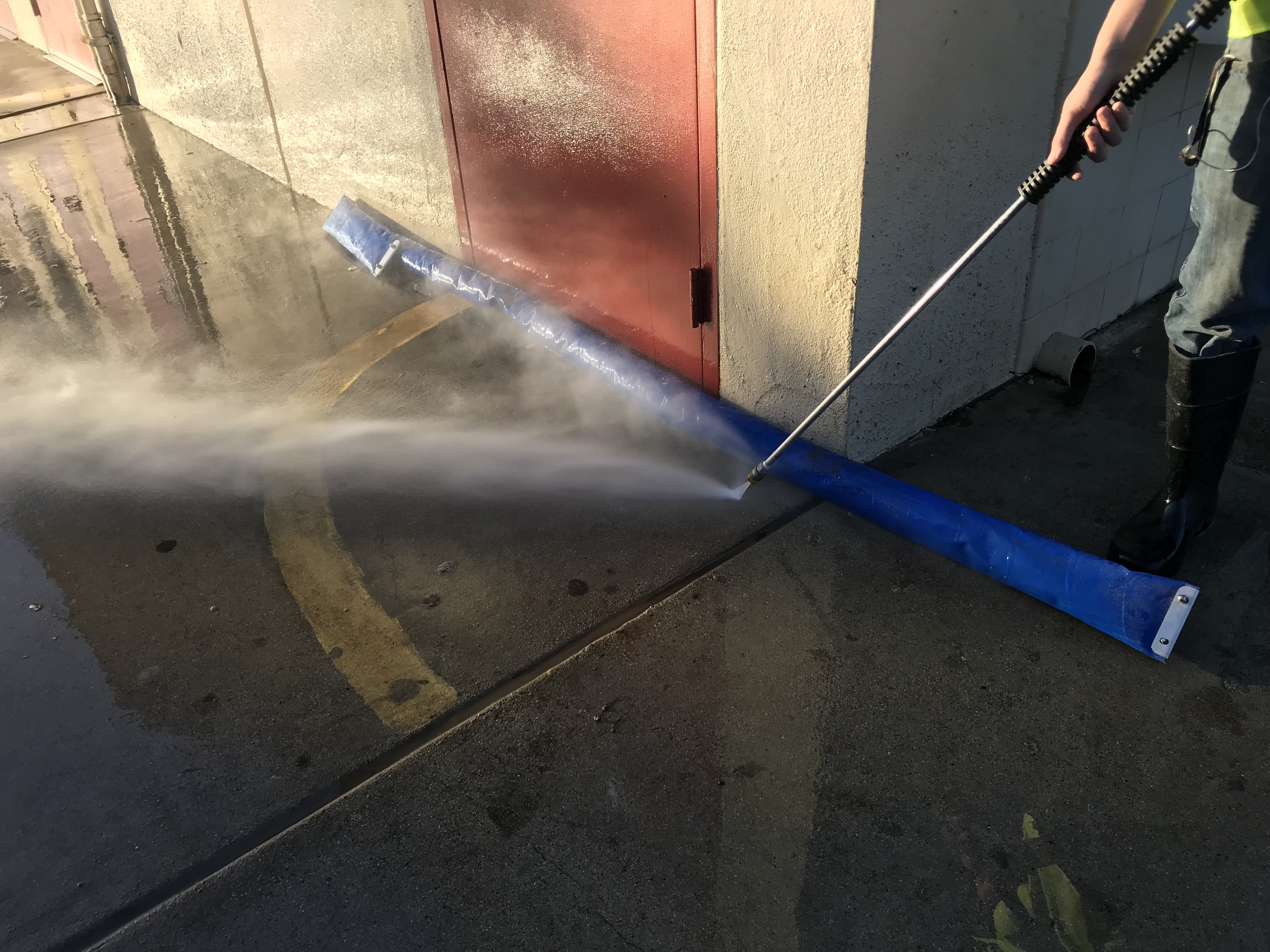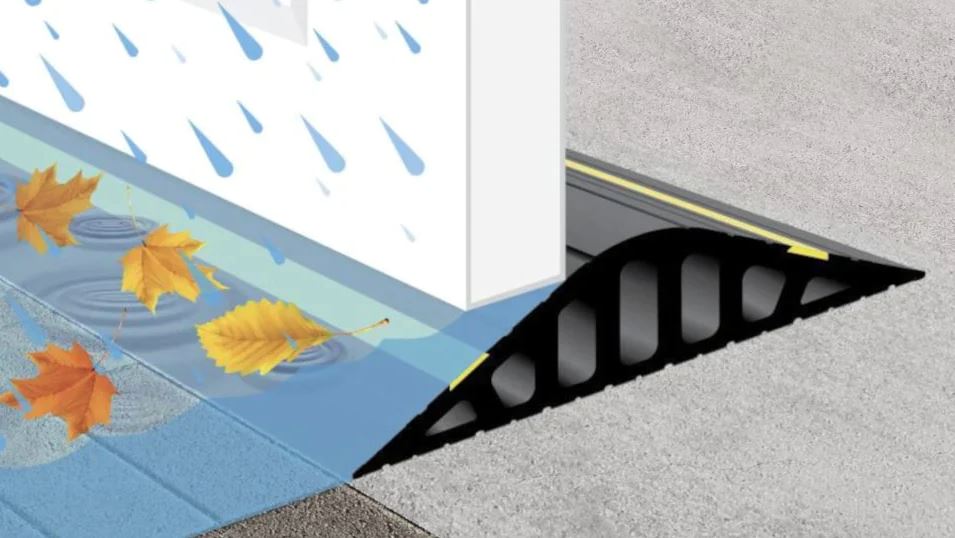Imagine stepping into your home, only to be greeted by an unwelcome splash of water pooling under your door. It’s frustrating and can lead to bigger issues like water damage or mold.
But here’s the good news: you can stop this problem before it starts. When water seeps in under your door threshold, it’s more than just a nuisance; it’s a call for action. Understanding why this happens and how to fix it is crucial.
With the right approach, you can keep your home dry and safe. Are you ready to take control and prevent water from invading your space? Let’s dive into practical solutions that will help you keep your home secure from unwanted moisture.
Common Causes Of Water Intrusion
Water intrusion under a door threshold can be a frustrating issue, especially when it leads to more extensive damage inside your home. Understanding the common causes can help you take the right steps to prevent it. Whether it’s a matter of poor installation, adverse weather conditions, or damage over time, addressing the root cause is crucial. Do you often find yourself mopping up water after a heavy rainstorm? If so, it might be time to inspect your door threshold.
Poor Door Installation
One of the most common culprits of water intrusion is poor door installation. When doors are not installed correctly, gaps can allow water to seep in. Consider checking the alignment and fit of your door. Is the door snug against the frame, or do you notice gaps? A misaligned door is a red flag. Reinstalling or adjusting the door could save you from future water damage.
Weather Conditions
Weather conditions play a significant role in water intrusion. Heavy rain or snow can overwhelm even the best door thresholds. Are you living in an area prone to heavy rainfall? If yes, think about adding weather stripping or a door sweep. These simple additions can act as barriers against water and are cost-effective solutions.
Damaged Thresholds
A damaged threshold is an invitation for water to come in. Over time, wear and tear can lead to cracks or warping. Inspect your threshold; does it look worn or damaged? Replacing a damaged threshold might seem daunting, but it’s often a straightforward task. This can prevent water from seeping in and causing damage to your floors and walls.
Have you checked your door threshold lately? If not, it might be the perfect time to take a closer look. Identifying and addressing these common causes can make a significant difference in keeping your home dry and safe.

Credit: www.youtube.com
Assessing The Damage
Water seeping under a door threshold can cause serious issues. Dampness can damage floors and lead to mold growth. Understanding the extent of the damage is crucial. Assessing each component will help find the source of the problem.
Inspecting The Threshold
Start with a close look at the threshold. Check if it’s cracked or worn out. Damage here allows water to enter easily. A sturdy threshold is essential for keeping water out. Look for signs of rot or decay. These indicate urgent replacement is needed.
Checking Weather Stripping
Weather stripping is vital for blocking water. Examine it for tears or gaps. Damaged strips fail to keep water from entering. Ensure the strips are snug against the door. If they’re loose, water can seep through. Replace any worn-out pieces promptly.
Evaluating Door Frame Integrity
Door frames should be in good condition. Look for any gaps or weaknesses. A weak frame can’t hold the door tight. Water can easily find its way in. Check for any signs of warping or bending. This may indicate structural issues.
Immediate Preventive Measures
Water seeping under a door threshold can create chaos. Immediate preventive measures can help manage this issue effectively. These actions can protect your home and keep interiors dry. They are simple, quick, and do not require professional help. Below are some useful methods to stop water from entering under your door threshold.
Applying Temporary Sealants
Temporary sealants offer a quick fix. They act as a barrier against water. Select a water-resistant sealant for best results. Apply it along the door threshold. Ensure that all gaps are filled. Check the sealant periodically. Reapply if necessary. This method is cost-effective and easy to implement.
Using Door Sweeps
Door sweeps block water entry effectively. They attach to the bottom of your door. Choose a sweep made of rubber or vinyl. These materials are durable and water-resistant. Install the sweep by screwing it into place. Ensure it fits snugly against the door. This prevents water from seeping underneath.
Installing Weather Stripping
Weather stripping seals gaps around doors. It keeps water out while maintaining indoor temperature. Measure the door frame carefully. Cut the stripping to fit these measurements. Attach it along the door’s edges. Use adhesive for a strong hold. Check for any gaps after installation. Adjust if necessary to ensure a tight seal.

Credit: pressurewashingresource.com
Long-term Solutions
Sealing gaps with weatherstripping or using a door sweep effectively prevents water from seeping under door thresholds. Ensure proper installation to maintain long-term protection against moisture. Regular checks help identify early signs of wear or damage.
Keeping water from seeping under your door threshold is essential to protecting your home from damage. While temporary fixes might keep you dry for a while, long-term solutions ensure peace of mind. These strategies not only prevent water intrusion but also enhance your home’s overall resilience. Let’s dive into some effective long-term solutions to help you tackle this issue head-on.Replacing The Door Threshold
A damaged or worn-out door threshold can be a major culprit in allowing water into your home. Replacing it with a new, sturdy one can create a more effective barrier against moisture. When choosing a new threshold, look for materials that offer good durability and moisture resistance. Make sure to measure the existing threshold accurately. A snug fit ensures no gaps for water to sneak through. Have you considered using a threshold with a built-in weather seal? This small addition can make a big difference.Upgrading To Waterproof Materials
Switching to waterproof materials can greatly improve your door’s defense against water. Materials like rubber or composite thresholds are designed to withstand moisture. They can last longer than traditional wood, which can warp and rot over time. Even the door’s bottom sweep can be upgraded. Opt for a heavy-duty, waterproof sweep that seals tightly against the threshold. This small investment can save you from bigger headaches down the line.Improving Drainage Systems
Sometimes, the problem isn’t just the door; it’s where the water is coming from. Improving the drainage around your home can prevent water from pooling near your door. This means looking at your gutters, downspouts, and the grading of your yard. Ensure that gutters and downspouts are clear and directing water away from your home. Does your yard slope towards your house? If so, regrading might be necessary to channel water away effectively. Are you ready to take these steps to protect your home? Long-term solutions require some effort but offer lasting benefits. Share your thoughts or ask questions in the comments below!Diy Fixes Vs. Professional Help
Water sneaks under door thresholds, causing damage. DIY fixes can be quick and budget-friendly. Professional help ensures a long-lasting solution.
When water seeps under your door threshold, it’s a nuisance. It can lead to serious damage if not fixed. Two main approaches exist to tackle this issue: DIY fixes and professional help. Each option offers unique benefits and potential drawbacks. Understanding these can help you choose the best solution for your situation.Pros And Cons Of Diy
DIY solutions often save money. You can buy materials at a hardware store. With online tutorials, repairs seem straightforward. Yet, there are challenges. DIY repairs require time and effort. Mistakes might lead to bigger problems. Inexperience can result in improper sealing. This could cause more water damage over time.When To Call A Professional
Professional help ensures quality. Experts have the right tools and knowledge. They identify hidden issues quickly. Hiring a professional saves time. It provides peace of mind. Call a professional if the problem persists. Large water damage requires expert intervention. Complex repairs need skilled hands.
Credit: us.garadry.com
Maintenance Tips
Water seeping under a door threshold can cause damage. Proper maintenance helps prevent this. Regular checks and cleaning ensure a dry, secure home. Here are some essential maintenance tips.
Regular Inspections
Check your door threshold every month. Look for signs of wear and damage. Ensure that seals are intact. If you notice any cracks, consider replacing them. A small crack can let water in easily.
Seasonal Adjustments
Adjust door thresholds with changing seasons. Wood can expand in humid weather. Ensure doors fit snugly without gaps. This helps keep water out. Tighten screws and adjust hinges regularly.
Keeping Thresholds Clean
Keep the area around thresholds clean. Dirt and debris can block seals. Use a soft brush to remove dirt. Clean with mild soap and water. Ensure thresholds are dry after cleaning. A clean threshold works effectively.
Frequently Asked Questions
What Causes Water To Seep Under Door Thresholds?
Gaps and poor sealing often allow water to seep through. Check for cracks or worn-out weatherstripping.
How Can I Seal A Door Threshold Effectively?
Use weatherstripping or a door sweep. Apply caulk to fill gaps. Ensure tight fitting.
Why Is My Door Threshold Leaking During Rain?
Rainwater can enter through gaps or cracks. Inspect and repair any visible damage to the threshold.
Can A Door Sweep Stop Water Entry?
Yes, a door sweep can help. It seals the gap between the door and the floor.
Is Caulking Necessary For Threshold Leaks?
Yes, caulking seals gaps and cracks. It prevents water from entering under the threshold.
Conclusion
Keeping water out is crucial for your home’s safety. Regular checks prevent damage. Proper seals and adjustments make a big difference. Use quality materials for lasting results. Quick fixes can save time and money. Seek professional help if needed. Remember, a dry entryway protects your floors.
Stay proactive, and maintain regularly. With these tips, you can tackle water issues effectively. Your door threshold should now withstand the elements. Enjoy a dry and comfortable home environment. Simple steps lead to great results. Practice these tips to ensure peace of mind every season.




